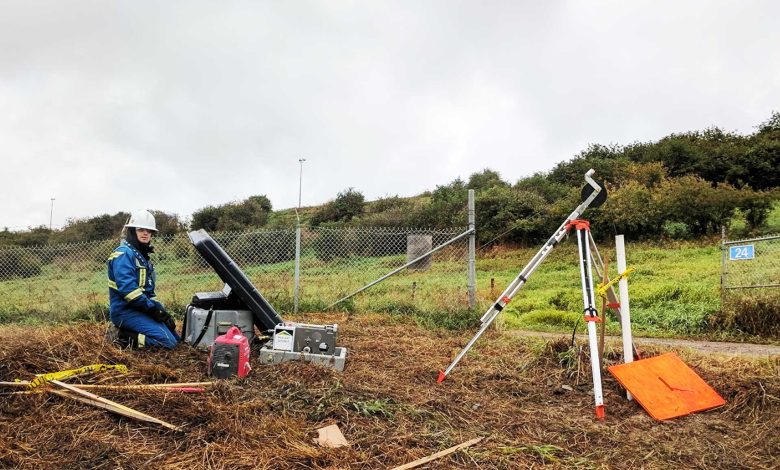The Power of Borehole Logging: Unveiling the Earth’s Secrets, Below the Surface
The Power of Borehole Logging: Unveiling the Earth's Secrets, Below the Surface

Introduction
Borehole logging, a technique widely used in geology and geophysics, holds immense power in unraveling the secrets hidden beneath the Earth’s surface. By analyzing data obtained from deep boreholes, scientists and engineers can gain valuable insights into the geological composition, hydrological characteristics, and resource potential of subsurface formations. In this article, we will explore the significance of borehole logging and its diverse applications, shedding light on the Earth’s hidden treasures.
1. Understanding Subsurface Geology
Borehole logging provides a window into the complex world beneath our feet. Geologists employ various logging techniques to examine rock formations, assess their lithology, and understand their structural characteristics. Measurements such as natural gamma radiation, resistivity, and sonic velocities help identify different rock types and their boundaries. This information aids in creating accurate geological models, understanding sedimentary processes, and identifying potential mineral deposits or hydrocarbon reservoirs. By unraveling the subsurface geology, borehole logging serves as a crucial tool in resource exploration and characterization.
2. Evaluating Hydrological Properties
Water resources are vital for human survival and development. Borehole logging plays a significant role in assessing hydrological properties such as groundwater levels, flow rates, and aquifer characteristics. Techniques like water level measurements, groundwater sampling, and hydraulic conductivity tests provide essential data for understanding the quantity and quality of subsurface water resources. This information helps in sustainable water management, well design, and the protection of aquifers from contamination. Borehole logging aids in determining optimal locations for water extraction and contributes to the development of water supply strategies.
3. Geotechnical Assessments
Before any construction project can begin, a thorough understanding of the ground conditions is crucial to ensure stability and safety. Borehole logging assists in geotechnical assessments by providing valuable data on soil and rock properties. Measurements such as cone penetration tests, shear wave velocity, and pressuremeter tests aid in evaluating parameters like soil strength, compaction, and deformation characteristics. This information guides the design of foundations, retaining structures, and slope stability analysis. By conducting geotechnical assessments, borehole logging helps mitigate risks associated with ground conditions and ensures the longevity of infrastructure projects.
4. Characterizing Subsurface Contamination
In environmental studies, borehole logging plays a critical role in characterizing and monitoring subsurface contamination. By collecting samples and analyzing them for chemical and physical properties, scientists can assess the extent and composition of contaminants in the subsurface. Borehole logging techniques like soil gas sampling and groundwater monitoring provide valuable data for identifying pollution sources, understanding migration pathways, and evaluating remediation strategies. This information is crucial for environmental management, site remediation, and protecting human health and ecosystems.
5. Assessing Geothermal Resources
Renewable energy sources are gaining significant attention in the quest for sustainable development. Borehole logging contributes to the assessment and utilization of geothermal resources. By measuring parameters such as temperature gradients, thermal conductivity, and heat flow, scientists can evaluate the potential of subsurface areas for geothermal energy extraction. Borehole logging helps identify suitable locations for geothermal wells, estimate resource capacity, and optimize the design of geothermal systems. With its assistance, geothermal energy can be harnessed efficiently and contribute to clean and sustainable energy production.
6. Monitoring and Managing Subsurface Activities
Borehole logging is instrumental in monitoring and managing various subsurface activities. In mining operations, logging techniques help in ore body delineation, geotechnical stability assessments, and monitoring of underground conditions. In oil and gas industry, logging assists in reservoir characterization, wellbore integrity evaluation, and production optimization. Borehole logging also plays a crucial role in underground storage projects, such as carbon capture and storage (CCS) or underground storage of natural gas. By monitoring pressure, temperature, and fluid movement within the subsurface reservoirs, borehole logging helps ensure the integrity and safety of these storage facilities.
7. Advancements in Borehole Logging Technology
Over the years, advancements in technology have revolutionized borehole logging techniques. Modern logging tools and equipment offer higher precision, improved data resolution, and increased depth capabilities. Logging instruments can measure a wide range of parameters simultaneously, providing comprehensive data sets for detailed analysis. Furthermore, the integration of digital logging data with advanced data processing and interpretation software enhances the accuracy and efficiency of logging operations. These advancements in borehole logging technology have expanded its capabilities and made it an indispensable tool in various scientific and engineering disciplines.
Conclusion
Borehole logging unlocks the Earth’s secrets by providing valuable information about subsurface geology, hydrological properties, geotechnical characteristics, environmental conditions, and energy resources. Its applications span across diverse fields, including resource exploration, water management, geotechnical engineering, environmental studies, and renewable energy development.
With the advancements in technology, borehole logging continues to evolve, offering more precise and comprehensive data for better decision-making and sustainable development. By utilizing the power of borehole logging, scientists and engineers can delve deeper into the Earth’s mysteries, making informed decisions and unlocking the potential of the subsurface for the benefit of humankind.



